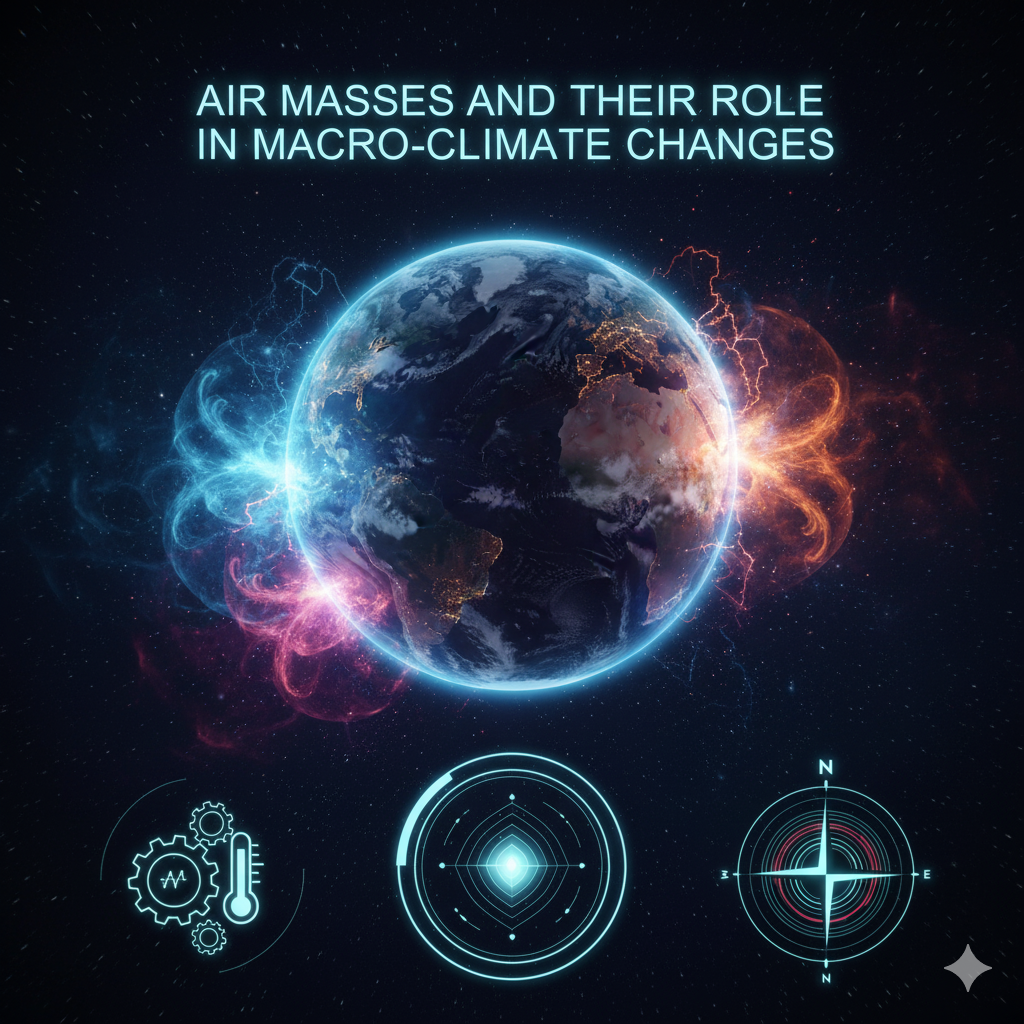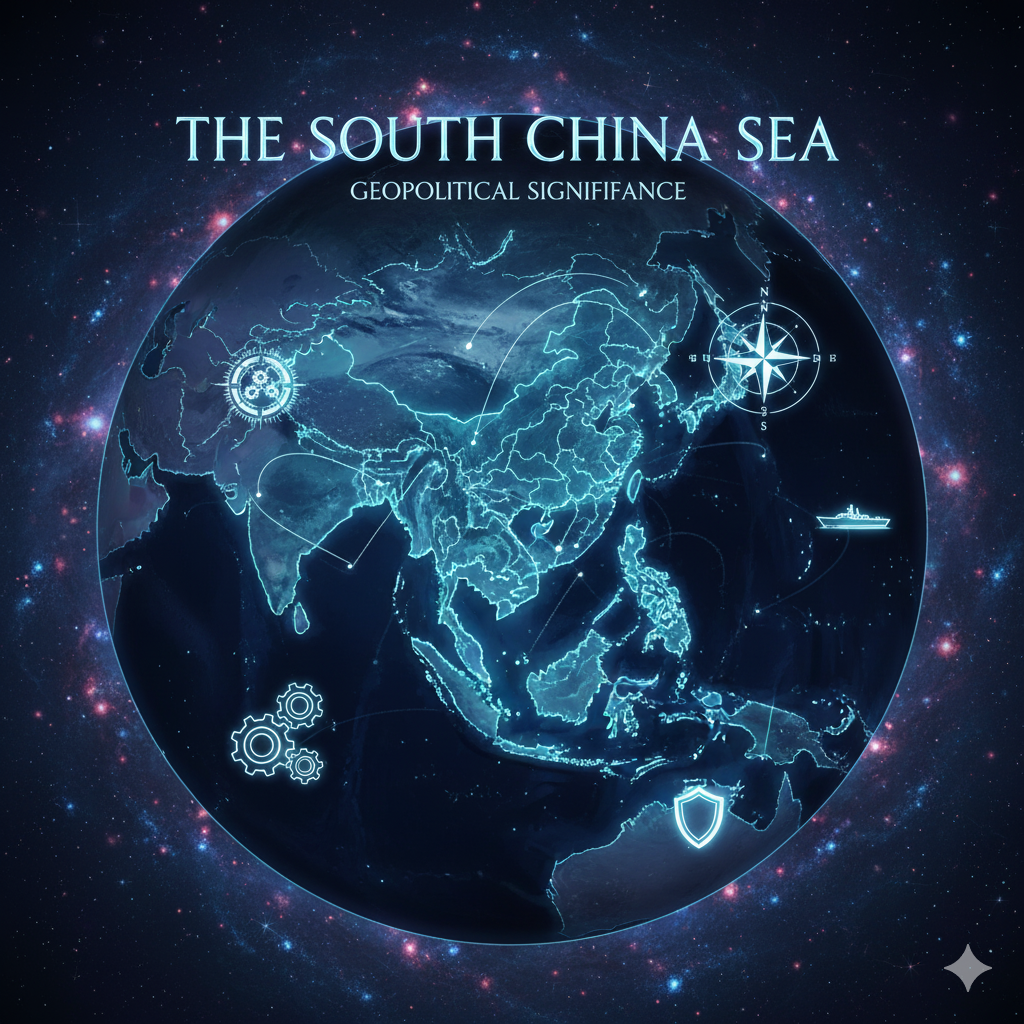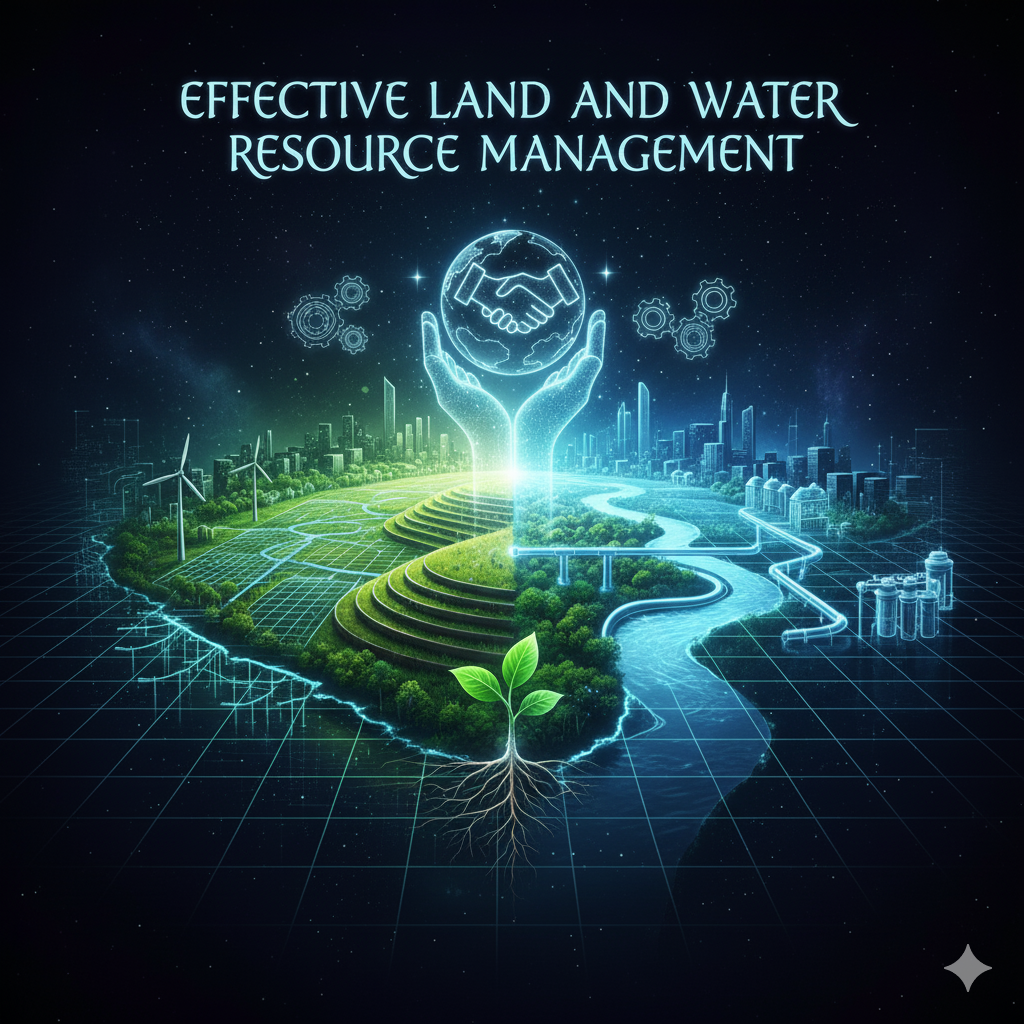Introduction
The Earth’s atmosphere is not a uniform body of air. Instead, it is composed of vast segments with distinct physical properties of temperature, pressure, and humidity. These large bodies of air are known as air masses. An air mass can cover thousands of kilometers and extend vertically through the troposphere. Its characteristics are determined by the surface over which it forms, and it carries these properties as it moves.
Air masses are fundamental building blocks of the global climate system. Their interaction and movement govern weather patterns, storm formation, precipitation cycles, and ultimately macro-scale climate variations. Understanding the concept of air mass, therefore, provides crucial insight into both daily weather events and long-term climate shifts.
This essay will explain the concept of air mass, its types and characteristics, and how their movements and interactions contribute to macro-climatic changes across the globe.
Concept of Air Mass
An air mass is defined as a large body of air in the lower atmosphere that has relatively uniform temperature and humidity throughout its horizontal extent. The concept was first introduced by Norwegian meteorologist Tor Bergeron in the 1920s.
Key Characteristics
- Large Size: An air mass may cover thousands of kilometers in horizontal extent.
- Uniform Properties: Within an air mass, temperature and humidity remain fairly consistent at any given altitude.
- Source Region Influence: The physical properties of an air mass are determined by the nature of the surface over which it forms.
- Mobility: Air masses are not stationary; they move and interact, leading to weather changes and larger climate patterns.
Formation of Air Masses
Air masses develop in source regions—areas where the atmosphere is stable, allowing prolonged contact between the surface and overlying air. These regions are usually:
- Extensive flat areas with uniform surface conditions (e.g., oceans, deserts, tundra).
- Areas with high-pressure systems, which promote stable atmospheric conditions.
Through prolonged interaction, the air acquires the characteristics of the surface, such as moisture content and temperature.
Classification of Air Masses
Air masses are classified based on moisture content (maritime or continental) and temperature characteristics (tropical, polar, or arctic).
1. Based on Moisture
- Maritime (m): Form over oceans, carrying high moisture content.
- Continental (c): Form over landmasses, generally dry.
2. Based on Temperature
- Tropical (T): Warm air masses formed in low latitudes.
- Polar (P): Cold air masses from high latitudes.
- Arctic/Antarctic (A): Extremely cold, originating from ice-covered regions.
- Equatorial (E): Hot and moist air from equatorial oceans.
Common Types of Air Masses
- mT (Maritime Tropical): Warm and moist; e.g., Gulf of Mexico air mass.
- cT (Continental Tropical): Hot and dry; e.g., deserts of Mexico or Sahara.
- mP (Maritime Polar): Cool and moist; e.g., North Atlantic or North Pacific.
- cP (Continental Polar): Cold and dry; e.g., Canada, Siberia.
- cA (Continental Arctic): Extremely cold and dry.
- mE (Maritime Equatorial): Very warm and humid, mainly over equatorial oceans.
Fronts and Air Mass Interactions
When two different air masses meet, they do not mix easily due to differences in density. Instead, they form a boundary called a front. Fronts are classified as:
- Cold Front: Cold air mass advances and displaces warm air.
- Warm Front: Warm air advances and overrides cold air.
- Stationary Front: Neither air mass displaces the other.
- Occluded Front: Cold front overtakes a warm front.
Fronts are zones of significant weather activity—storms, rainfall, cyclones, and temperature changes. The movement of these air mass boundaries is one of the primary drivers of regional and global climate systems.
Role of Air Masses in Macro-Climate Changes
Air masses are central to shaping the macro-climate—the large-scale climatic conditions prevailing over continents and oceans. Their role can be explained in the following dimensions:
1. Determining Regional Climate
- Tropical Regions: Maritime tropical air masses bring heavy rainfall to equatorial areas, supporting rainforests.
- Desert Regions: Continental tropical air masses create hot and dry climates (e.g., Sahara, Thar).
- Polar Regions: Continental polar and arctic masses create extremely cold and dry conditions.
- Temperate Regions: Alternating influence of tropical and polar masses leads to variable weather and distinct seasons.
2. Influence on Monsoons
- The South Asian monsoon is largely a result of shifting air masses.
- In summer, maritime tropical air masses from the Indian Ocean bring heavy rainfall.
- In winter, continental polar and tropical air masses create dry conditions.
3. Storm and Cyclone Formation
- Interaction between maritime tropical and continental polar air masses over oceans generates cyclones and hurricanes.
- In North America, clashes between cP and mT air masses create powerful tornadoes.
4. Ocean–Atmosphere Interaction
- Maritime air masses transfer heat and moisture between oceans and atmosphere, influencing large-scale climate systems like El Niño and La Niña.
- Warm maritime tropical masses intensify oceanic low-pressure systems, altering global precipitation cycles.
5. Climate Variability and Anomalies
- Long-term shifts in air mass patterns can cause macro-climatic changes, such as desertification, changes in rainfall belts, or warming of mid-latitudes.
- Polar air mass intrusions into mid-latitudes lead to extreme cold waves in North America and Eurasia.
6. Role in Jet Streams and Global Circulation
- Air masses interact with jet streams (fast-moving upper-atmosphere winds).
- These interactions control the movement of storm systems and climate belts across continents.
Case Studies of Air Mass Impact
1. The Indian Monsoon
- Driven by mT air masses from the Indian Ocean.
- Climate of South Asia is regulated by seasonal alternation of moist maritime and dry continental air masses.
2. North America
- cP air masses from Canada interact with mT from the Gulf of Mexico, producing severe thunderstorms and tornadoes in the “Tornado Alley.”
- Winter cold waves are caused by southward intrusion of polar air masses.
3. Europe
- Maritime polar air masses from the North Atlantic bring mild and wet conditions to Western Europe.
- Continental polar air masses from Siberia cause harsh winters in Eastern Europe.
4. Sahara Desert
- Dominated by cT air masses, leading to persistent hot and dry climate.
5. Arctic Oscillation
- Variability in Arctic air masses affects climate patterns in North America, Europe, and Asia.
- Weaker polar vortex allows cP and cA air masses to spill southward, causing extreme winters.
Air Masses and Long-Term Climate Change
1. Global Warming and Air Mass Behavior
- Rising global temperatures alter the thermal characteristics of air masses.
- Warmer maritime air masses carry more moisture, intensifying rainfall and floods.
- Shrinking polar ice alters cA and cP air masses, leading to irregular cold waves.
2. Shifts in Climatic Zones
- Expansion of tropical air masses northwards and southwards is leading to desertification in subtropical regions.
- Polar air masses retreat due to Arctic warming, reducing snow cover and altering global albedo.
3. Intensification of Extreme Events
- Heatwaves, droughts, and cyclones are becoming more frequent due to unstable air mass interactions.
- For example, stronger mT air masses in the Pacific contribute to more powerful typhoons.
4. Feedback Mechanisms
- Changes in air mass circulation can amplify climate change.
- Example: Melting Arctic ice alters jet stream patterns, causing prolonged extreme weather in mid-latitudes.
Importance of Studying Air Masses
- Climate Prediction: Helps in long-term forecasting of rainfall, droughts, and storms.
- Agriculture: Farmers depend on seasonal air mass shifts for crop cycles.
- Disaster Management: Anticipating cyclones, floods, or heatwaves.
- Global Policy: Understanding air mass dynamics supports international efforts against climate change.
Challenges in Air Mass Research
- Complex Interactions: Air masses constantly interact with oceans, land, and each other, making prediction difficult.
- Impact of Climate Change: Traditional air mass classifications may evolve as global warming alters patterns.
- Data Limitations: Accurate monitoring requires satellites, weather stations, and advanced modeling.
- Regional Variability: Local topography (mountains, deserts, oceans) modifies air mass behavior in unpredictable ways.
Conclusion
The concept of air mass is a cornerstone in understanding atmospheric science, weather patterns, and climate systems. Air masses are not merely passive carriers of heat and moisture but active agents shaping macro-climate changes across the globe. From regulating monsoons in South Asia to driving cyclones in the Pacific and cold waves in North America, their influence is both global and profound.
In the context of contemporary climate change, air masses are undergoing significant transformations—warming tropical masses, unstable polar air masses, and shifting circulation patterns. These changes are not only altering regional climates but also reshaping the global climate system.
Therefore, a comprehensive study of air masses is essential, not only for academic purposes but also for practical applications in agriculture, disaster preparedness, and climate policy. Understanding their role provides a crucial foundation for addressing the challenges of a warming world and building resilience against future climatic uncertainties.




